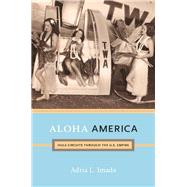Aloha America
, by Imada, Adria L.- ISBN: 9780822351962 | 082235196X
- Cover: Hardcover
- Copyright: 7/9/2012
Aloha Americareveals the role of hula in legitimating U.S. imperial ambitions in Hawai'i. Hula performers began touring throughout the continental United States and Europe in the late nineteenth century. These "hula circuits" introduced hula, and Hawaiians, to U.S. audiences, establishing an "imagined intimacy," a powerful fantasy that enabled Americans to possess their colony physically and symbolically. Meanwhile, in the early years of American imperialism in the Pacific, touring hula performers incorporated veiled critiques of U.S. expansionism into their productions. By the 1930s the Hawaiian economy depended on tourism. Hawaiian culture, particularly its music and hula, had enormous promotional value. Between the 1930s and 1950s many Hawaiian women toured throughout the islands and the continental United States. In their live stage shows, Hawaiian women dancing hula acted as ambassadors of aloha(love), enabling Americans to imagine Hawai'i as feminine and benign, and the relation between colonizer and colonized as mutually desired. In the 1940s thousands of U.S. soldiers and military personnel in Hawai'i were entertained by hula performances, many of which were filmed by military photographers. Adria L. Imada examines images from these little-known films before turning to the present-day reappropriation of hula by the Hawaiian self-determination movement.






